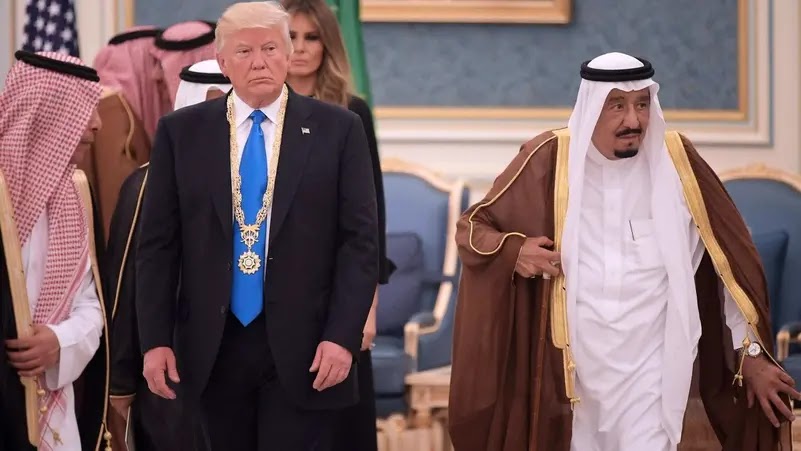 |
| Tramp returns to Riyadh after eight years |
Trump's two visits to Riyadh... What has changed in the region?
Only eight years separated Donald Trump's two visits to Saudi Arabia in 2017 and today, 2025. This was accompanied by questions from the international community about what changed between the two visits, what changed in the region, and whether President Trump, who inaugurated his first term with a visit to Riyadh in 2017, has changed.
Only eight years separated Donald Trump's two visits to Saudi Arabia in 2017 and today, 2025. This was accompanied by questions from the international community about what changed between the two visits, what changed in the region, and whether President Trump, who inaugurated his first term with a visit to Riyadh in 2017, has changed.
Today, he is returning to the same place to begin his second term's foreign visits, but with more influential allies, more diversified economies, and transformations that have made the Arabian Gulf an indispensable political and economic player. As for Trump II, he appears more liberated from the traditional establishment, but he still maintains the same compass: the Gulf first.
From oil to renewable energy... the map of interests is shifting
When Trump first arrived in Riyadh, oil prices were recovering after years of decline, and the Gulf was viewed solely as an energy reservoir. Today, however, the equation is completely different. Saudi Arabia is implementing the world's largest solar energy projects and planning to live without oil under "Vision 2030."
Its sovereign wealth funds are at the forefront of global investment lists. Trump realizes that the region has become America's largest "partner," even as European investors are selling it out for fear of trade wars. Big ideas are no longer born exclusively in Washington, but on the shores of the Red Sea, where models for future cities like NEOM are being conceived, and where alliance priorities are shifting.
The Vision Comes True
When Trump first visited Saudi Arabia, Vision 2030, announced by Saudi Crown Prince Mohammed bin Salman, was taking its first steps. The world watched with wonder and skepticism as Saudi Arabia changed its economic trajectory in a way that would transform the entire region.
Other Gulf states were also moving forward with their own reform and transformation plans. Most of the Vision's promises have become a halfway reality. Aramco is a publicly listed company, the Saudi sovereign wealth fund leads investment funds worldwide, and other changes are taking place in Saudi Arabia.
Today, renewable energy projects in Saudi Arabia are changing the equation, such as the world's largest solar farm. The Carnegie Endowment notes that by 2025, Vision 2030 will have "made undeniable progress" in reducing dependence on oil. Non-oil revenues and the share of non-oil GDP have increased, and a region that was viewed in the West a decade ago as both a reservoir of energy and a source of problems has become the key to solving many of them.








.jpg)










The United States seeks to strengthen its strategic alliances in a region of major geopolitical importance, while the Gulf states benefit from strengthening relations with a major power that holds global weight in the areas of security, diplomacy, and the economy.
ReplyDeleteTrump visited KS in 2017 and again in 2025. This was accompanied by questions from the international community about what had changed between the two visits, what had changed in the region, and what taxes he had imposed on the world.
ReplyDelete